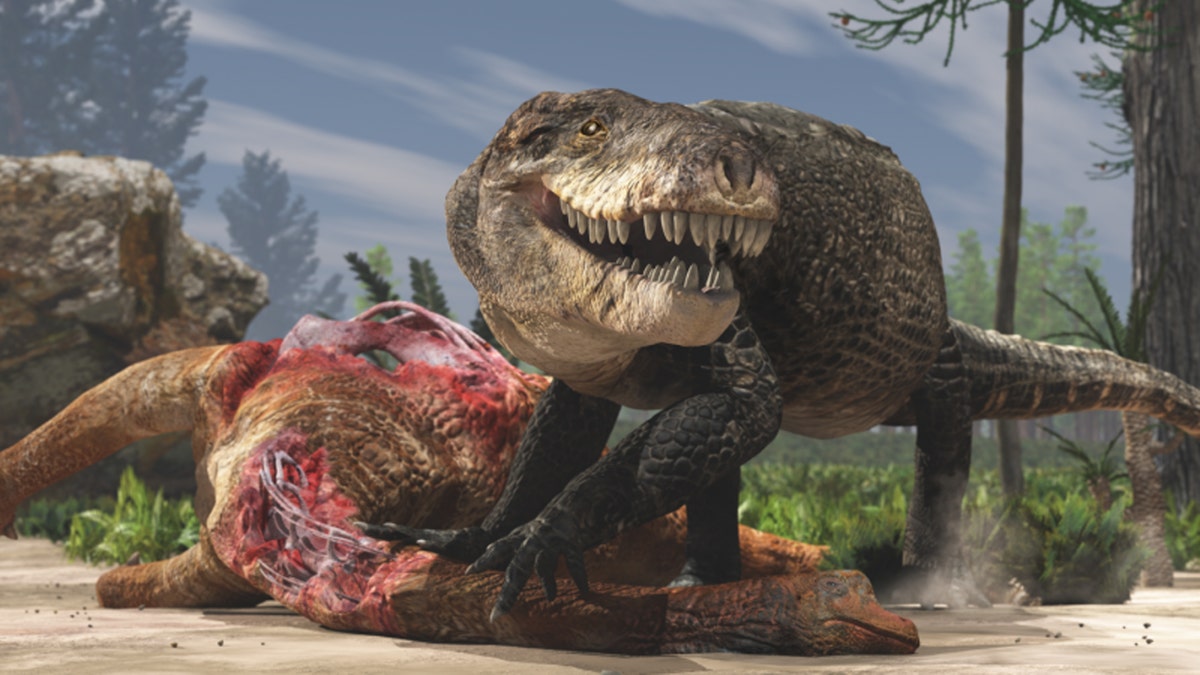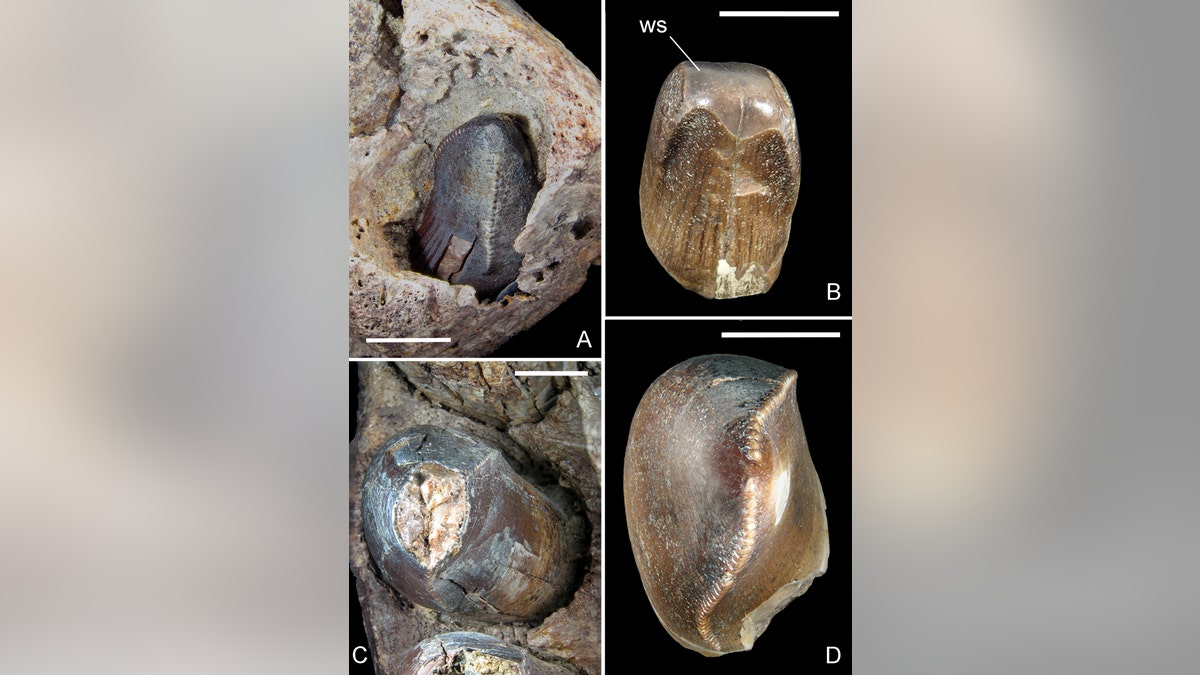
A paleoartistic restoration of Razanandrongobe sakalavae scavenging on a sauropod carcass in the Middle Jurassic of Madagascar. Unlike extant crocodilians, this terrestrial predator had a deep skull and walked on erect limbs. Credit: Fabio Manucci
A new study has finally shed light on a mysterious, jaw fragment discovered on Madagascar years ago. It is from an ancient crocodile, nearly 24-feet in length, with teeth like a Tyrannosaurus Rex.
The study, published in the journal PeerJ, highlights the creature, identified as Razanandrongobe sakalavae, as an enormous crocodile ancestor. The ancient croc likely walked on land, hunting its prey with its massive teeth and jaws.
DINOSAUR EXTINCTION ALLOWED FROGS TO CONQUER THE PLANET
Put together by researchers Cristiano Dal Sasso, Giovanni Pasini, Guillaume Fleury and Simone Maganuco, the study notes that the teeth are "remarkably large [i.e., even larger than the largest denticles in large-bodied theropods, Tyrannosaurus rex included]."

(Figure 6: Mesial and lateral teeth of R. sakalavae. (A) replacement tooth pm1 in MHNT.PAL.2012.6.2; (B) mesial functional tooth MSNM V5775; (C) pm4 in MHNT.PAL.2012.6.2; (D) lateral tooth of indeterminate position MSNM V5773. Scale bars = 10 mm. Credit: Cristiano Dal Sasso, Giovanni Pasini, Guillaume Fleury, Simone Maganuco https://peerj.com/articles/3481/#fig-6)
The longest tooth found was 15 cm (5.9 inches) in length. By comparison, the longest T. rex tooth ever found was 12 inches, though they often vary in length.
R. sakalavae means "giant lizard ancestor from Sakalava region."
"Razanandrongobe sakalavae is the largest terrestrial carnivore from this Middle Jurassic terrestrial ecosystem and was perhaps one of the top predators in Madagascar at the time," the study's conclusion reads. "Its jaws were extremely robust and high, but possibly short, and bore large teeth with serrated edges resembling those of theropod dinosaurs. Many features of this species strongly suggest that it fed also on hard tissue such as bone and tendon."
THE RISE OF THE DINOSAURS MAY HAVE BEEN CAUSED BY VOLCANOES, NEW STUDY FINDS
It is the oldest and largest known "notosuchian," a suborder of Gondwanan mesoeucrocodylian crocodylomorphs that lived during the Jurassic and Cretaceous periods. It predates other members of the species by 42 million years.
The fossils are from the mid-Jurassic period, approximately 166 million years ago. They were first found in the early 1970s, with other parts of the Razana skull found later. The findings were made after the fossils were made available to the Muséum d’Histoire Naturelle in Toulouse, France, where they were then analyzed and reconstructed. They had been previously part of a private collection.
The skull was reconstructed using a CT scan, as well as using 3-D printers to print out missing bone fragments, using mirror images of existing fragments.
